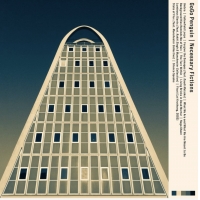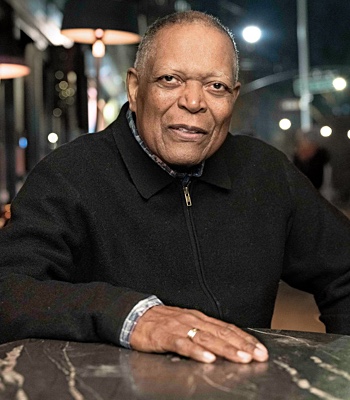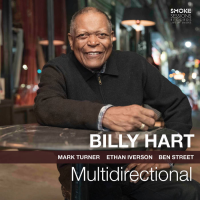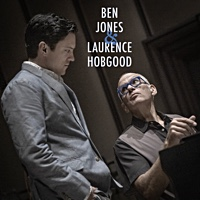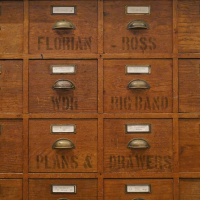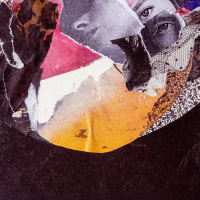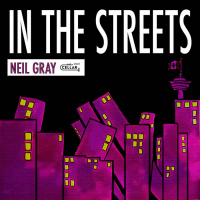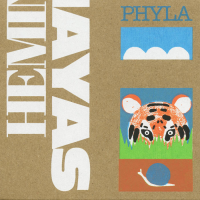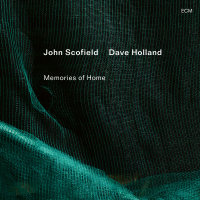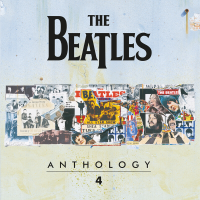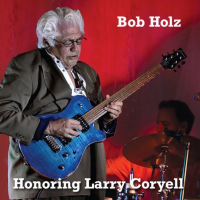Home » Jazz Articles » Multiple Reviews » Piano Four-té: Keyboard Masters Delight On A Quartet of ...
Piano Four-té: Keyboard Masters Delight On A Quartet of ECM Luminessence Vinyl Reissues

This scintillating batch of ECM Luminessence vinyl reissues features classic albums by Chick Corea, Paul Bley and Rainer Brüninghaus, along with Herbie Hancock playing as a sideman with ex- Miles Davis reedman Bennie Maupin.
This batch of Luminessence reissues features classic albums by three pianists—Chick Corea (Piano Improvisations Vol. 1, 1971), Paul Bley (Open, to Love, 1973), and Rainer Bruninghaus (Freigeweht, 1981)—who enjoyed long and fruitful associations with ECM, plus saxophonist/flutist Bennie Maupin's The Jewel in the Lotus (1974) featuring Herbie Hancock, who in contrast made his first and, for four decades, only appearance on the label as a contributor to Maupin's ensemble.
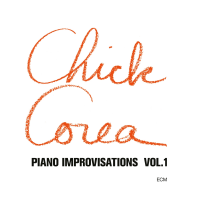 Chick Corea
Chick Corea Piano Improvisations Vol. 1
ECM
1971
Chick Corea was only 29 at the time of recording this, his first solo piano LP, but he had already accomplished a great deal. Following early recordings and tours with Sonny Stitt, Stan Getz, Willie Bobo and Herbie Mann, he had recently released albums as a leader for Atlantic's Vortex imprint (Tones for Joan's Bones, 1968) and Solid State/Blue Note (the superb Now He Sings, Now He Sobs, 1968 and Is, 1969), and had played a major role on the epochal Miles Davis fusion albums In a Silent Way (Columbia, 1969) and Bitches Brew (Columbia, 1970). Just two months prior to the April 1971 recording of Piano Improvisations Vol. 1 (the same sessions yielded a second volume released a year later by ECM), Corea had recorded the important double live LP Paris-Concert (ECM, 1972) with the cooperative quartet Circle featuring Anthony Braxton, Dave Holland, and Barry Altschul.
It was producer Eicher's idea to make solo piano recordings, an idea he pitched simultaneously to Corea, Keith Jarrett and Paul Bley. Despite Jarrett eventually becoming the form's greatest exponent, the vagaries of touring musicians' schedules meant that Corea got there first, followed by Bley (see below) and Jarrett (whose first solo piano disc, Facing You, arrived in 1972 on ECM). This music is worlds away from the aggression of Circle: for the most part, the album is melodic, wistful, and embodies a lilting, dancing rhythmic approach that contrasts with Jarrett's proclivity for rootsy gospel vamps.
The opening "Noon Song" has more than a bit of Ravel in its DNA, while "Ballad For Anna" filters such classical melodic influences through the style of Bill Evans's melancholy musings. It is striking how many of the themes making up side one's songs pop up in Corea's other work. The memorable, brooding "Song For Sally" later appeared as the epic "Sea Journey" on bassist Stanley Clarke's debut LP Children Of Forever (Polydor, 1973); with Corea playing and producing) and on Passengers (ECM, 1977) by Gary Burton with Eberhard Weber. "Song of the Wind" first appeared on Is, while the lengthy solo essay on the Latin-influenced "Sometime Ago" precedes the version on the 1972 self-titled ECM debut of Corea's own fusion band, Return to Forever. Side two is given over to an impressionistic suite of eight "pictures" entitled "Where Are You Now?" The pieces are quite varied: at times, the music seems to lay the groundwork for George Winston's Windham Hill recordings; recalls the avant-garde piano-as-tuned percussion sound of John Cage; references Rimsky-Korsakov's "The Flight of the Bumblebee" and Thelonious Monk's "Trinkle Tinkle"; and hints at Mussorgsky's "Pictures at an Exhibition."
Corea's brief liner notes indicate that these recordings were his first attempt to provide "musical 'answers' to life's questions." This is an intensely personal record that outlines much of what Chick Corea brought to the piano and looks forward to the impressively varied body of work he would amass over the next 50 years until his passing in 2021 at the age of 79.
 Paul Bley
Paul Bley Open, To Love
ECM
1973
Contrary and enigmatic, Canadian pianist Paul Bley cut a wide swath through jazz across a nearly 70-year career. From playing and recording with Charlie Parker and recording for Charles Mingus's Debut Records label in the early 50s to helping spark the free jazz of the '60s alongside Albert Ayler, Ornette Coleman, and Jimmy Giuffre; from inspiring and then recording the compositions of first wife Carla Bley to pioneering live synthesizer concerts with second wife Annette Peacock; from ESP-Disk to ECM, Bley exerted a broad influence few musicians can approach. When Eicher pitched the idea of a solo piano LP recorded at the Arne Bendiksen Studio in Oslo to Bley, the pianist was at a low point. His relationship with Peacock falling apart, he was making ends meet on the bar mitzvah and wedding circuit of New York City. Having just come out of his synthesizer period, Bley was interested in seeing how he might transfer the slowly-evolving, endless sustain of synthesized sound to the acoustic piano, and Eicher was game. The sound of the resulting album Open, To Love reflects both close micing techniques and Bley's extraordinary playing that conjures up a feeling of being suspended in time.
The record opens with two of Carla Bley's compositions. Paul had previously recorded "Closer" in a trio format with bassist Steve Swallow and drummer Barry Altschul as the title track of his 1966 ESP-Disk LP. The contrast between that recording and this solo version exemplifies Bley's approach on Open, To Love: the tune is slowed down, and new notes and phrases are introduced only after the prior ones have been allowed to bloom and decay, creating a mesmerizing sound picture. A seven-minute take on Carla's oft-recorded "Ida Lupino"—a true modern standard—follows. Paul's approach fits this tribute to the early feminist icon of Hollywood like a glove, respecting the tune's memorable melody while ably exploring its wistful harmonic implications. The album's title track is a song by Annette Peacock, on which Bley manages to retain the feel of her singing (sometimes humming along himself) while expanding the space between notes to introduce a ringing sustain. At one point, he strums the strings of the piano like a zither for emphasis. The album is rounded out by two tracks credited to Paul which are really palimpsests on well-known songs: "Started" is a meditation on elements of the standard "I Can't Get Started," while "Harlem" is based on the vamp from Roy Eldridge's "I Remember Harlem," with perhaps a touch of "St. James Infirmary."
Open, To Love stands as a successful tribute to Paul Bley's musical and romantic muses. The slow pace and suspended feel make the music seem more abstract than it really is; close listening reveals the singing melodic lines that remain intact, even as they have expanded outwards into aural space.
 Rainer Brüninghaus
Rainer Brüninghaus Freigeweht
ECM
1981
German keyboardist and composer Rainer Brüninghaus may not be as well-known as Corea and Bley, but he has amassed a similarly diverse musical resume over the past five decades. While a student at the University of Cologne in 1970, he formed the seminal German jazz-rock band Eiliff, which released two albums before splitting up. He joined guitarist Volker Kriegel and his band Spectrum, then subsequently played a crucial role in the "symphonic jazz" captured on several ECM albums by bassist Eberhard Weberand his group Colours, including 1973's classic The Colours of Chloë, as well as on many albums by saxophonist Jan Garbarek. Freigeweht (German for "blown free," referenced by the album's evocative artwork by photographer Christian Vogt) was Brüninghaus's first solo LP and the first in-depth demonstration of his compositional voice. Having been steeped in the works of classical masters such as Beethoven, Grieg, Debussy, Ravel and Brahms, Brüninghaus combines piano with tastefully deployed synthesizers to create extended pieces that incorporate arpeggiated ostinatos, dreamy pads of tone color and near-ambient interludes that embody the ECM style.
Ably accompanying the composer on Freigeweht are Canadian/British flugelhorn master Kenny Wheeler and drummer Jon Christensen, both of whom were longtime ECM contributors in a variety of settings, plus occasional features for Brynjar Hoff, first oboist of the Oslo Philharmonic. Wheeler takes the lion's share of solos, playing so melodically that he effectively creates compositions of his own within tunes such as the driving "Stufen" ("Stages") and "Spielraum" ("Leeway"). "Radspuren" ("Wheel Tracks") nods to Brüninghaus' countrymen Tangerine Dream, beginning with lyrical piano that dissolves into a repeated synth sequence that Christensen makes swing with his sensitive drumming, Wheeler adding a lovely melodic structure. Hoff doesn't come to the fore until side two's "Täuschung der Luft" ("Deception of the Air"), the only drumless tune. This desolate, beautiful air for oboe is accompanied by Brüninghaus's eerie undulating synth textures, sounding for all the world like Sibelius' Fourth Symphony before turning thicker and darker toward the end of the track. Freigeweht concludes with the 12-minute title track, which combines several of the various styles featured on the rest of the record. An opening arpeggiated synth line is accompanied by Christensen's syncopated ride cymbal. As the use of the drum kit expands, Hoff, now on English horn, spools out a long, keening solo that leads to a multilayered expansion of the keyboard arpeggio. Christensen subtly solos over this, before the leader plays the tune out with a beautiful solo piano meditation.
Cinematic, hypnotic and brooding, Freigeweht successfully combines the rhythmic freedom of jazz with minimalism, symphonic textures, and ambient electronic music. Its reissue is a welcome chance to highlight the important contributions Brüninghaus made to the ECM catalog, largely in a supporting role for better-known players.
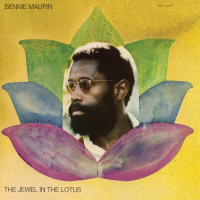 Bennie Maupin
Bennie Maupin The Jewel in the Lotus
ECM
1974
The Jewel in the Lotus is the debut solo album by versatile woodwind player Bennie Maupin, but the strong contribution of Herbie Hancock—whom Maupin supported on the pianist's Mwandishi trilogy (Mwandishi, Warner Brothers, 1971; Crossings, Warner Brothers, 1972; and Sextant, Columbia, 1973) as well as on the smash hit Head Hunters (Columbia, 1973)—connects this release to the concurrent Luminessence reissues discussed above. The then-33-year-old Maupin had made his name as a hugely valuable sideman, not only for Hancock but via high-profile recordings with Miles Davis (Bitches Brew Columbia, 1970, Jack Johnson, Columbia, 1971 and On The Corner , Columbia, 1972), Chick Corea (Is), Woody Shaw (Blackstone Legacy, Contemporary, 1970), and Lee Morgan (Live At The Lighthouse, Blue Note, 1971). The time was clearly ripe for him to step out on his own. On The Jewel in the Lotus Maupin plays flute, glockenspiel and a variety of reed instruments in front of a band including two drummers (Frederick Waits and Billy Hart), an additional percussionist (Bill Summers), bassist Buster Williams and trumpeter Paul Bley in addition to Hancock. Recorded at New York City's famed studio The Record Plant, the LP is largely atmospheric and textural, with nods to the fusion styles of Davis and Hancock, but with less rhythmic and melodic structure.
Album opener "Ensenada" introduces Williams' repeated bass interval atop which Waits plays marimba flourishes. Maupin plays long, becalmed reed tones under which Hancock's piano ripples as Hart introduces a subtle hi-hat and rimshot pattern. Despite its eight-minute length, it feels like an introductory overture. The episodic "Mappo," named after Maupin's dog, is announced with a crashing piano chord and a flute flourish, before settling into another pattern of long-held tones, this time on Sullivan's trumpet. Bells and Maupin's flute melodies suggest an Asian feel, before Hancock and Williams introduce a climbing, stepwise theme. As the drummers plus Summers provide a breezy polyrhythm, Hancock comes to the fore with a characteristically dramatic solo that takes the song to a climax. "Excursion" conjures a Buddhist temple (Maupin had embraced the faith) with shimmering gongs, glockenspiel, bells and an electronically-treated chant. A free jazz maelstrom is subsequently conjured, which settles down into the brief piano showcase "Past+Present=Future" that closes side one.
Side two opens with the 10-minute title track, Hancock switching to Fender Rhodes with a swishy tremolo effect. Williams and the two drummers exchange volleys over creamy Rhodes chords until the leader enters with a theme, which again consists of long-held saxophone notes supported by sawing bowed bass. It's beautiful, and in a mysterious way recalls "Bitches Brew" (the album's title track) but with a sunnier, major-key feel. After the short interlude of "Winds of Change," "Song for Tracie Dixon Summers" presents some of the most focused music of the set. It begins with an intriguing bass solo, which gives way to a yearning theme played by Maupin, Hancock supporting him with chords and runs, while Waits and Hart play the kind of fidgety, episodic drum parts so prevalent on the album. The closing track, "Past is Past," is largely a duet by Maupin and Hancock, and its rolling melody and arching piano declamations end the record on a hopeful note.
More about exploratory sound worlds than memorable tunes, The Jewel in the Lotus is an album very much of its time. It is an extension of Maupin's work with Hancock and Davis, but due to the interesting mix of players, it is successful on its own terms and is very vividly recorded.
Tracks and Personnel
Piano Improvisations, Vol. 1Tracks: Noon Song; Song for Sally; Ballad for Anna; Song of the Wind; Sometime Ago; Where Are You Now? (A Suite of Eight Pictures)
Personnel: Chick Corea: piano
Open, To Love
Tracks: Closer; Ida Lupino; Started; Open, To Love; Harlem; Seven; Nothing Ever Was, Anyway.
Personnel: Paul Bley: piano
Freigeweht
Tracks: Stufen; Spielraum; Radspuren; Die Flüsse Hinauf; Täuschung der Luft; Freigeweht.
Personnel: Rainer Brüninghaus: piano; Kenny Wheeler: flugelhorn; Jon Christensen: drums; Brynjar Hoff: oboe, English horn
The Jewel in the Lotus
Tracks: Ensenada; Mappo; Excursion; Past + Present = Future; The Jewel in the Lotus; Winds of Change; Song for Tracie Dixon Summers; Past is Past.
Personnel: Bennie Maupin: reeds, voice, glockenspiel; Herbie Hancock: piano, electric piano; Buster Williams: bass; Frederick Waits: drums and marimba (left channel); Billy Hart: drums (right channel); Bill Summers: percussion, water-filled garbage can; Charles Sullivan: trumpet.
Tags
Multiple Reviews
Joshua Weiner
DL Media
Blue Note
Verve
Impulse!
Prestige
ECM
Chick Corea
Paul Bley
Rainer Bruninghaus
BENNIE MAUPIN
Herbie Hancock
Sonny Stitt
Stan Getz
Willie Bobo
Herbie Mann
Circle
anthony braxton
Dave Holland
Barry Altschul
Keith Jarrett
Bill Evans
Stanley Clarke
Gary Burton
Eberhard Weber
George Winston
John Cage
Thelonious Monk
Charlie Parker
Charles Mingus
Albert Ayler
Ornette Coleman
Jimmy Giuffre
carla bley
Annette Peacock
Steve Swallow
Roy Eldridge
Volker Kriegel
Jan Garbarek
Kenny Wheeler
Jon Christensen
Brynjar Hoff
Woody Shaw
lee morgan
Frederick Waits
Billy Hart
Bill Summers
Buster Williams
Charles Sullivan
PREVIOUS / NEXT
Support All About Jazz
 All About Jazz has been a pillar of jazz since 1995, championing it as an art form and, more importantly, supporting the musicians who make it. Our enduring commitment has made "AAJ" one of the most culturally important websites of its kind, read by hundreds of thousands of fans, musicians and industry figures every month.
All About Jazz has been a pillar of jazz since 1995, championing it as an art form and, more importantly, supporting the musicians who make it. Our enduring commitment has made "AAJ" one of the most culturally important websites of its kind, read by hundreds of thousands of fans, musicians and industry figures every month.



